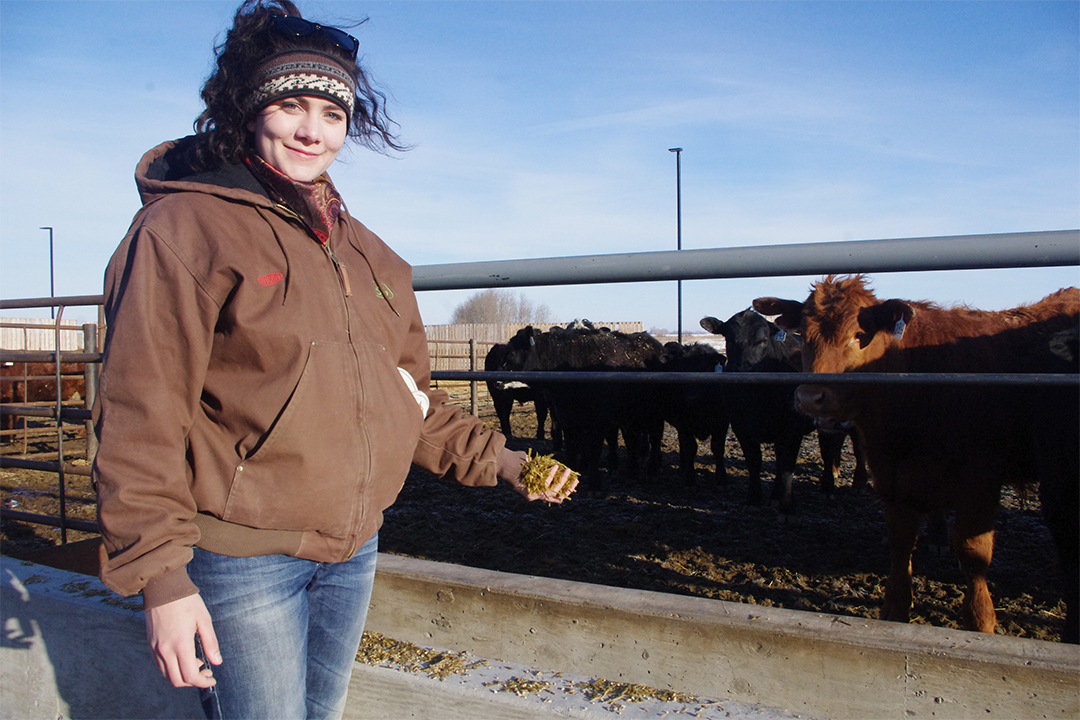
Triticale silage the focus of LFCE feeding trial
Researchers at the University of Saskatchewan are evaluating triticale silage as a potentially viable option for feeding steers compared to barley silage.
By Lana HaightA hybrid of wheat and rye, triticale is an attractive option for producers: it’s high-yielding, high in protein and tolerant to drought. On the negative side, triticale silage is also known for its “awns” or large hairs that can reduce the animals’ feed intake and potentially slow their weight gain.
Recently researchers have developed newer varieties of triticale that have renewed interest in it as a silage option for beef cattle. But still, switching to this forage has to make sense to a producer’s bottom line.
“Economics is huge. Silage is a very expensive forage to put up. It’s a green feed that you chop when it’s wet. You need to pack it in a pile and cover it so that it’s in airtight conditions. It stays wet and the natural bacteria cause fermentation, which conserves the forage. This takes a lot of equipment,” says Brittany Ross, who is in her final year of a master of science degree in animal science at USask.
Triticale typically provides higher yields than barley silage, and those better yields offset the high cost of producing forage. But the real question, which Ross is working to answer, is whether backgrounding steers grow as fast when fed triticale forage compared to barley silage.
“In Saskatchewan, a lot of producers run background operations. This is when fall-weaned calves are fed over winter and then typically sold in February or March to a feedlot where the calves are put on a finishing diet,” says Ross, whose work is supervised by Dr. Bart Lardner (PhD), a professor in the Department of Animal and Poultry Science at the College of Agriculture and Bioresources.
The trials are intended to mimic what would normally happen in a Saskatchewan backgrounder cattle operation, says Ross, who grew up on a ranch near Oyen in eastern Alberta.
The three-year project began during the winter of 2016-17 when a previous graduate student ran year one of the trial. After Ross began her graduate studies in 2017, she ran year two of the trial during the winter of 2017-18 and is running the trial’s final year this winter.
Year three started in December 2018 when 300 backgrounding steers arrived at the Livestock and Forage Centre of Excellence’s Forage Cow-Calf Research and Teaching Unit south of Clavet, Sask. Each freshly-weaned steer weighed approximately 250 kilograms. They were vaccinated, treated with antibiotics, and implanted with a growth hormone.
After 21 days of being fed the same diet and having time to acclimatize to their new pens, the steers were sorted into 12 replicate groups. During the next 90 days, researchers used two varieties of triticale as silage feed: animals in four pens were fed Taza triticale silage while animals in another four pens received Bunker triticale silage. Steers in the final four pens were fed Austenson barley silage as the study’s control. All of the animals were fed a ration consisting of a silage, barley grain and supplement pellets.
Researchers weighed the steers at each trial’s beginning and end, as well as at two-week intervals throughout the three-month trial. As part of her analysis, Ross will compare the animals’ weight gain for each of the three feed regimes.
She’s analyzing the three silages, looking at the crop yields and their respective nutritional value. She has also collected the feed that wasn’t eaten by the cattle and will determine if they were selective when feeding.
After crunching all these numbers, Ross expects to have a science-based recommendation for Saskatchewan producers who raise cattle during the backgrounding phase.
“It makes me proud. I love how applicable it will be to the industry,” she says, adding she should have preliminary results by this summer.
Funding for the project came from the Saskatchewan Agriculture Development Fund and the Saskatchewan Beef Industry Development Fund.

